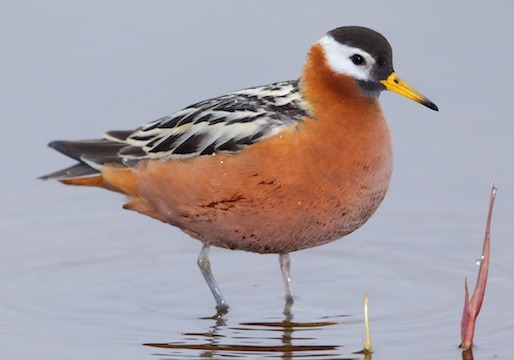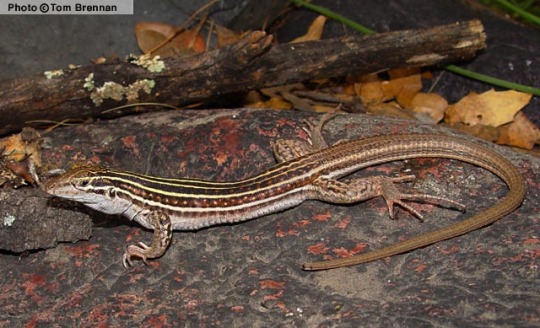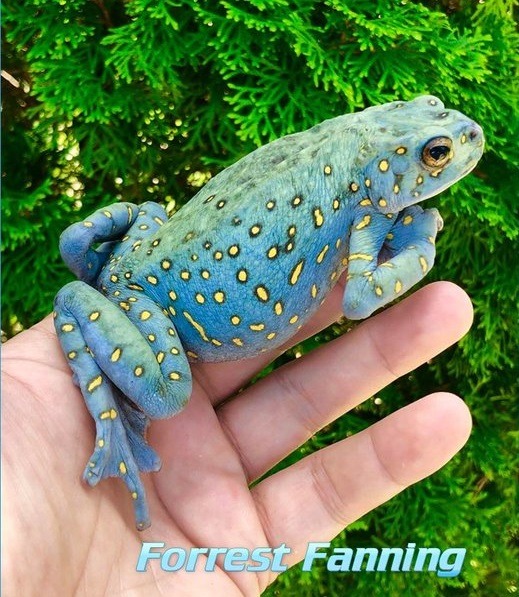#eunectes murinus
Text


お待たせしました!オオアナコンダの証明写真です
@日本平動物園
You waited patiently. Here is the passport photo of the anaconda.
@Nihondaira Zoo
100 notes
·
View notes
Text

Anaconda, Queen of the Amazon.
#vintage illustration#snakes#anaconda#the amazon#south america#jungles#south american jungle#amazon basin#amazon river#eunectes murinus#herpetology#biology#zoology
27 notes
·
View notes
Text
Critter fact #171:
The green anaconda (Eunectes murinus) is the heaviest species of snake
5 notes
·
View notes
Text
Fake news exposed ....
Fake news outed - a new ANACONDA SPECIES has NOT been discovered by Bryan Fry and his gang of thieves …
WTF - ….. Taxonomic vandalism again by the Wuster gang of thieves….
Eunectes akayima Bryan Fry and cohort, 2024 is an illegally coined junior synonym of Eunectes gigas, Beebe, 1946.
Other than that, their ostensibly peer reviewed paper was great, because it further validated the genus Maxhoserboa Hoser, 2012, type species Eunectes notaeus Cope, 1862, with a proven divergence of 26 MYA.
Thanks team!
More at:
https://www.smuggled.com/Issue-12-36-39.pdf
#Eunectes#akiyama#notaeus#murinus#Anaconda#snake#new species#Maxhoserboa#new genus#Hoser#Bryan Grieg Fry#Bryan#Fry#University of Queensland
0 notes
Note
Hello! Since March 8th is International Women’s Day, I was wondering if you might share with us some females from various species? (Since the more vibrant males tend to get the spotlight lol)
International Women’s Day!!!
Yes yes yes! With many animals, the females are more impressively large or more colorful than the males. Let's have a look at some impressive and amazing females...

(Southern) Green Anaconda (Eunectes murinus), female, family Boidae, Ecuador
With many snakes, the females get to be much larger than the males. Female Anacondas grow to be the heaviest snakes in the world, as up to 97.5 kg (214 lb 15 oz).
Though reports have claimed that Green Anacondas can grow up to over 30 ft long, the longest ever ACTUALLY measured was about 19 ft. long.
photograph by Alejandro Arteaga
Advance Wildlife Education

Brahminy Blindsnake aka Flowerpot Snake (Indotyphlops braminus), family Typhlopidae, found in tropical and subtropical areas around the world
This snake is native to somewhere along the Indian Ocean, possibly somewhere in SE Asia or coastal Africa.
The fossorial (burrowing) snake feeds mainly on the larvae, pupae, and eggs of ants and termites.
All known specimens of this snake have been female. They reproduce through parthenogenesis (asexually).
photograph via: UGA Coastal Ecology Lab

Red Phalarope (Phalaropus fulicarius), female, family Scolopacidae, order Charadriiformes, near Barrow, Alaska, USA
Female Phalaropes are larger and more colorful than the males. They court the males and defend the nest site. The males incubate the eggs, and raise the chicks.
photograph by Mark A. Chappell

Sonoran Spotted Whiptail (Aspidoscelis sonorae), females, family Teiidae, Arizona
This is another all female parthenogentic species.
There are other closely relates species, other whiptails and racerunners, that are also all female populations. Some of them are completely parthenogenic, and some combine parthenogenesis with sexual input from closely related species or populations nearby.
photograph by Tom Brennan

photograph by Forrest Fanning

photograph by Giuseppe Mazza
Asian Yellow-spotted Climbing Toad (Rentapia hosii), females, family Bufonidae, found in SE Asia
The females of this species are large, gorgeous, ornate frogs, while the males are much smaller and much less colorful.
#frog#toad#amphibian#snake#anaconda#reptile#phalarope#bird#animals#nature#whiptail#lizard#blind snake#international women's day
505 notes
·
View notes
Text
Facts of the Day: 🐍Green Anacondas🐍

Scientific Name: Eunectes murinus
Length: 20 to 30 feet on average, largest on record is 33 feet long
Weight: Up to 550 lbs on average, largest on record is 880 lbs
Lifespan: 10 years in the wild
Reproduction: They mate every other dry season from March to May, with a gestation period of six to seven months. These snakes are ovoviviparous, and will give birth to live young, having on average 20 to 40 offspring, but able to birth up to 82 baby snakes.
Diet: Fish, reptiles, amphibians, tapirs, deer, dogs, capybaras, sheep, and any other large animal that crosses their path. There’s reports of Green Anacondas even taking down Jaguars.
Habitat: South America, as well as some Caribbean islands, often near water, in tropical habitats.
Status: Not endangered, however may be threatened due to persecutory hunting, deforestation and habitat loss.
Summary: Green Anacondas are large, strong snakes, the largest snakes in the world, actually. Females are often the larger of the species, often engaging in cannibalism of the males they mate with in the breeding season. Being of the constrictor family, Green Anacondas do not kill their prey by envenoming them, but rather striking at their prey and then coiling around them, squeezing tighter and tighter until the animal suffocates. These snakes also have a unique set of teeth specialized for their ambush hunting in water. Unlike venomous snakes that have grooved fangs meant for delivering venom into their prey, Green Anacondas have over 100 non grooved teeth arranged in four rows in the top and bottom of their mouths. Because these teeth are curved backwards, they’re a very powerful tool when hunting prey, because if the prey attempts to rip themselves free once they’ve been bitten they will only impale themselves on the Green Anaconda’s teeth further.

#baby shark bites!#they have such dopey eyes!!!!#I'm not over it!!#tw snakes#tw snake#snake#snakes#green anaconda#anaconda#sfw regression#sfw age regression#sfw agere#sfw age regressor#sfw petre#sfw pet regression#sfw pet regressor#Age Regression#Agere#age regressor#petre#pet regression#pet regressor
31 notes
·
View notes
Text
Uncharismatic Fact of the Day
During the mating season, many species of reptiles and amphibians form ‘breeding balls’ in which multiple males surround a single female in an attempt to gain reproductive access. This behaviour is usually found in smaller species like the California newt or garter snakes, but this behaviour is present in larger species too. One notable example is the green anaconda, one of the largest snakes in the world. Up to 13-16 males will surround a female, attempting to insert their genetic material, and this can happen several times a month.

(Image: A green anaconda (Eunectes murinus) mating ball by Jesus Rivas)
If you like what I do, consider leaving a tip or buying me a kofi!
#green anaconda#Squamata#Boidae#anacondas#boas#snakes#serpentes#serpents#reptiles#uncharismatic facts
100 notes
·
View notes
Text
Snake Swag Bracket Round 1B

Hello to some of the very biggest snakes around! The green anaconda (Eunectes murinus) is one of the heaviest known snakes, and typically grow up to 15 feet and can weigh 150 lbs! They are found across South America, typically in tropical rainforest areas. They spend much of their time in water--their heavy bulk makes them slow moving on land but considerably quicker when swimming--but they can also be found in areas under thick vegetation or up in trees. The reticulated python (Malayopython reticulatus), is the longest known snake, typically growing up to 20 feet. They are found in a wide range around southeast Asia both on the mainland and surrounding islands. They are excellent swimmer, and they are sometimes reported pythons being spotted out at sea!
38 notes
·
View notes
Text
Animal of the Day!
Green Anaconda (Eunectes murinus)

(Photo from Smithsonian National Zoo)
Conservation Status- Least Concern
Habitat- South America
Size (Weight/Length)- 70 kg; 3 m
Diet- Large mammals; Large birds; Large reptiles; Smaller green anacondas
Cool Facts- Being the heaviest snake in the world, the largest green anaconda ever recorded weighed a whopping 97 kilograms. These chonkers are stealthy killers. They use water to camouflage their appearance and strike drinking or swimming animals. They tend to feed on animals that weigh half of their own mass ranging from caimans to capybaras. After striking, they use incredible muscles to coil around their prey and crush it to death.
Rating- 12/10 (They have puppy dog faces :3)
#Animal of the day#Animals#Snakes#Reptiles#Anaconda#Wednesday#September 28#Green anaconda#biology#science#conservation#the more you know
74 notes
·
View notes
Note
What’s the scientific name of your favorite snake
AHHHHH HEHEJENEBEJ
Eunectes murinus or the Green anaconda! They are so cute and chucky! And they are BIG. I love venomous snakes, but the consticters have my heart always!

LOOK AT THINK CHUNKY BOIIIII
6 notes
·
View notes
Text

Grzimek's Animal Life Encyclopedia. Volume 6: Reptiles. Written by Bernard Grzimek. 1984.
1.) Boa constrictor (Boa constrictor)
2.) Yellow anaconda (Eunectes notaeus)
3.) Green anaconda (Eunectes murinus)
4.) Rough boa (Eryx conicus)
5.) Indian sand boa (Eryx johnii)
62 notes
·
View notes
Text
A little Headcanon:
Brazil feels very proud to be the most biodiverse country in the world, so, in each meeting with other nations, he brings a random animal with him.
For example, once he picked out his beloved Spix's macaw and glared daggers towards Germany the whole time; in another occasion, he petted a jaguar pup in his lap, and in another one, a little incident with a baby anaconda got on the nerves of the other countries.
He's so fond of his birds, particularly the parrots, but when he walked up with an harpy eagle in his arm, the Europeans can't help but freaked out. The other nations held closer their own animals, while Panama and Colombia just screamed on exciting and started petting the enormous and intimidating bird. Thereafter, some nations started doing bets of what kind of animal will be the next time.
The situation scalate when he encouraged other countries to do the same, so, in the next meeting, Colombia calmly put down a little golden frog in the table. Spain just groaned and warned the others not to touch it. Someone asked why and Colombia, with a smile, answered "It's my Phyllobates terribilis, the most poisonous vertebrate in the world" and again, a lot of nations screamed in disbelief. Then, Brazil, pouting, took out his tiny frog, a pumpkin colored one (and also poisonous), and said he thought he would have the coolest frog. Other nations, such as Australia and Indonesia, also brought poisonous animals and before even the discussion started, the meeting room was full of dangerous spiders, snakes and even a bird! (courtesy of Indonesia).
No need to mention that bringing poisonous animals to global conferences was banned after that.
(Animals mentioned: Spix's macaw (Cyanopsitta spixii), Jaguar (Panthera onca), Green Anaconda (Eunectes murinus), Harpy Eagle (Harpia harpyja), Golden Poison Dart Frog (Phyllobates terribilis), Punpkin Toadlet (Brachycephalus rotenbergae) a recently discovered frog, and poisonous bird Pitohui (Pitohui dichrous))
9 notes
·
View notes
Text

Jade, the Green Anaconda. (Eunectes murinus).
3 notes
·
View notes
Text
Largest snake species in the world discovered in Amazon rainforest – and it's a whopper!
New Post has been published on https://petn.ws/XXDDH
Largest snake species in the world discovered in Amazon rainforest – and it's a whopper!
A recent paper published in MDPI Diversity has revealed that the world’s biggest and heaviest (but not the longest) snake – the green anaconda (Eunectes murinus) – is actually two distinct species, thought to have split almost ten million years ago. Although they look identical, the genetic difference between them is five and a half per cent. This […]
See full article at https://petn.ws/XXDDH
#ExoticPetNews
0 notes
Note
Did you know? New species of snake was discovered...
Like
...
A day ago or something
Interesting isn't it?

Yes yes yes, I just read this story yesterday!
New Green Anaconda species?
The basic gist is that the northern and southern populations of Green Anaconda are genetically different enough to warrant considering the 2 populations as different species. You cannot, however, notice any physical differences between the 2 populations.
Keep in mind, that just because this paper was published, and science websites and magazines published articles about it... that does not mean that this is settled science. The wider herpetological community needs to review and accept this.
If this holds up, then the "Green Anaconda" will be split into these 2 species...

Southern Green Anaconda (Eunectus murinus), family Boidae, Perú
The southern population/species will keep the old scientific name.
photograph by Justin Coburn

Northern Green Anaconda (Eunectes akayima), family Boidae, Venezuela
The northern population/species has a new scientific name.
photograph by Fernando Flores
289 notes
·
View notes
Text
“Swallow Anaconda: Eunectes Murinus ‘
Do you know that a mother Anaconda does not eat any food during her gestation time? After a long period of carrying the baby in her womb and until it goes out from her, Anaconda doesn’t eat. It’s only when the baby is out that she will be looking for food and you will expect […]“Swallow Anaconda: Eunectes Murinus ‘

View On WordPress
1 note
·
View note